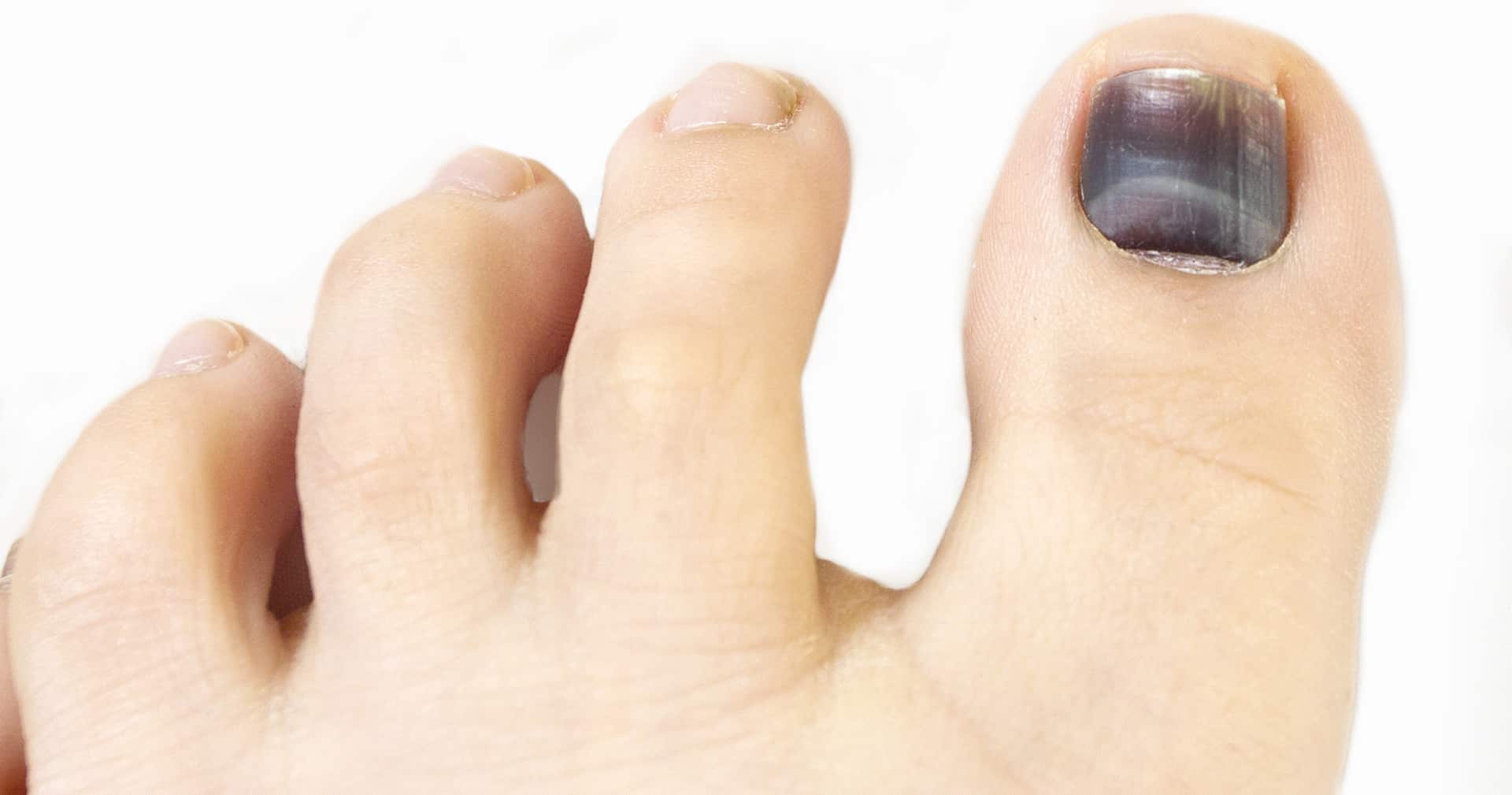A black toenail, or subungal haematoma, occurs when blood accumulates under a toenail, causing it to appear blackened.
Also known as ‘tennis toe’, subungal haematoma is caused by an excess of pressure on the toe, usually due to ill-fitting footwear. Footwear that gives rise to subungal haematoma may be either too tight, putting pressure on the toes, or too loose, causing the foot slide forward into the toe box during activity.
If you have a black toenail, it needs to be drained by your podiatrist to relieve pain and encourage a faster recovery. If your toe is tender, your podiatrist will administer local anaesthetic prior to draining. Your podiatrist will also examine your footwear and advise you on footwear fitting, footwear changes and, where appropriate, the use of prescription or non-prescription orthotics. This is especially important if you are involved in sporting activities that can lead to bruising of the toes, such as tennis or hiking.
If you have a black toenail, or are in pain because of an accumulation of blood under your nail, contact us as soon as possible.




